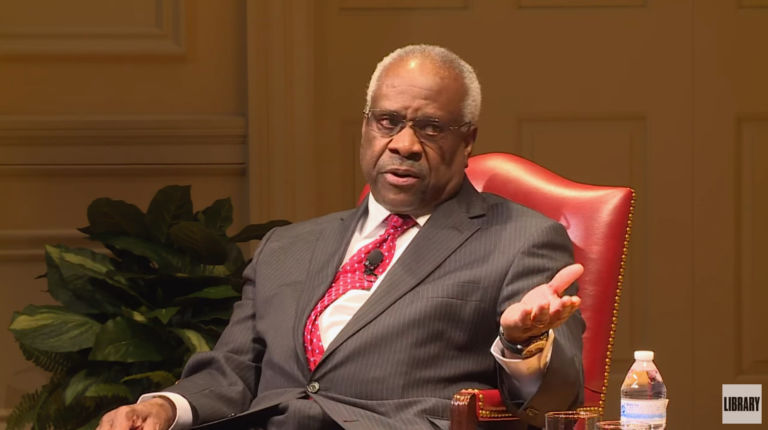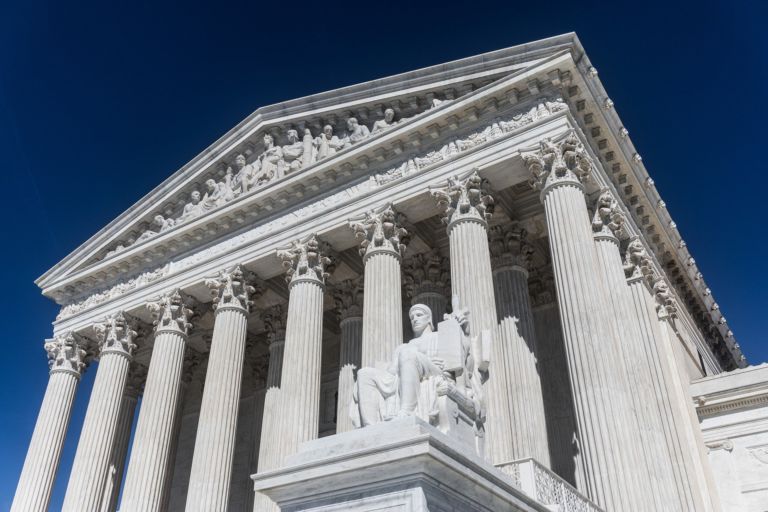- In 2008, the United States Supreme Court made it clear for the first time that the Second Amendment protects the right of private individuals to keep and bear weapons that are in common use for lawful purposes
- The United States Court of Appeals for the Fourth Circuit has been defying that holding for years, most recently by its dilatory handling of a challenge to Maryland’s assault weapons ban
- Locke has filed a brief urging the Supreme Court to take the matter away from the Fourth Circuit and strike down Maryland’s unconstitutional assault weapons ban without further delay
The United States Supreme Court devoted most of its 2008 opinion in District of Columbia v. Heller to a single question: Does the Second Amendment protect the right of individuals to keep and bear arms, or does it protect merely a collective right for them to form armed militias? Its answer was clear and decisive. “There seems to us no doubt, it said, “on the basis of both text and history, that the Second Amendment conferred an individual right to keep and bear arms.” The states and lower courts generally accepted that holding and treated it as binding precedent.
While the court declined to “undertake an exhaustive historical analysis … of the full scope of the Second Amendment,” it did indicate that Americans have a right to keep and bear weapons that are “in common use” and are “typically possessed by law-abiding citizens for lawful purposes.” Unfortunately, the states and lower courts have been much less willing to accept that part of Heller and treat it as binding precedent.
That reluctance was facilitated by an extended discussion that went well beyond what was necessary to decide the case. The court observed that “the right secured by the Second Amendment is not unlimited” and provided examples of persons, places, and things that had been traditionally regarded as lying outside the amendment’s protection. These included: felons and the mentally ill; schools and government buildings; and short-barreled shotguns, machine guns, and — more generally — “dangerous and unusual weapons.”
Many states and lower courts have used that discussion as a pretext for enacting and upholding severe restrictions on firearms, and state bans on so-called “assault rifles” have been a particularly blatant example. As Clarence Thomas has observed, by enacting and upholding such bans, the states and courts have been “flout[ing]” Supreme Court precedent.
The phrase “assault weapons” refers generically to Colt AR-15s and similar lightweight semi-automatic rifles. Such rifles account for approximately 20 percent of all firearms sold in America, and Americans currently own more than 24 million of them. Compared to other weapons, they are not particularly dangerous and are rarely used by criminals. They are emphatically not machine guns, i.e., fully automatic weapons that fire continuously with a single pull of the trigger, such as the M-16s used by the American military. Instead, like most handguns and long guns, they fire a single round with each pull of the trigger. By any conceivable standard, therefore, they satisfy the criteria established in Heller and do not fall within the “dangerous and unusual weapons exception.”
Despite those considerations, Maryland enacted a comprehensive ban on assault weapons in 2013. In 2016, in a decision by a three-judge panel, the United States Court of Appeals for the Fourth Circuit found that the law violated the Second Amendment. After a rehearing by the entire Fourth Circuit, however, the court reversed itself and decided that the challenged law (Maryland’s assault weapons ban) was constitutional after all. It held that assault weapons fall “outside the ambit of the Second Amendment” because they are “like M-16 rifles, i.e., weapons of war that are most useful in military service.”
When a group of Maryland gun owners challenged the assault weapons ban again in 2020, the Fourth Circuit in Bianchi v. Brown upheld it again, citing its 2016 holding as justification. This time, however, the challengers appealed their case to the Supreme Court, and the Supreme Court vacated the Fourth Circuit’s judgment and remanded the case for reconsideration.
In response to the Supreme Court’s order, the Fourth Circuit solicited new briefs from the parties and set the case for argument before a panel of its judges. Before the panel could issue its opinion, however, the court took the highly unusual step of ordering a rehearing before the entire court. There seems little doubt that it took that step because it feared the panel was going to strike down the law. The court then left the case in limbo for more than a year and finally got around to hearing oral arguments last week. From what was said, it appears a majority of the judges are still inclined to uphold the law on the theory that assault rifles are, like M-16s, essentially weapons of war.
In a petition filed last month, the Bianchi challengers asked the Supreme Court to take the case away from the Fourth Circuit and deliver its own judgment on the merits. Earlier this month, the John Locke Foundation, the Independence Institute, and the International Law Enforcement Association & Trainers Association filed a brief supporting that request.
The brief was written by the Independence Institute’s Dave Kopel with the assistance of Campbell Law School’s Second Amendment expert, Greg Wallace. It marshals a wealth of evidence to show beyond doubt that AR-15s and similar semi-automatic rifles fall squarely within the Second Amendment’s protection and that the Fourth Circuit’s “weapons of war” argument is specious nonsense.
AR-style rifles have been in common use for lawful purposes by millions of law-abiding Americans for many years. They are less dangerous than most long-guns and are generally comparable to handguns in that regard. Unlike M-16s, they do not permit automatic fire, and for that reason they are not used by any military force anywhere in the world. They are, however, the rifle of choice for many police departments all over the country. To call them “weapons of war” is to defame America’s law enforcement officers.
We look forward to a strongly worded decision by the Supreme Court chastising the Fourth Circuit and restoring the right to keep and bear arms in Maryland and in every other state that bans assault weapons.
For more information see:
Locke’s brief supporting Bianchi et al.’s original petition to the Supreme Court
The Carolina Journal’s summary of oral argument at the Fourth Circuit
Recording of oral argument at the Fourth Circuit
The Carolina Journal’s summary of Locke’s recent Supreme Court brief


